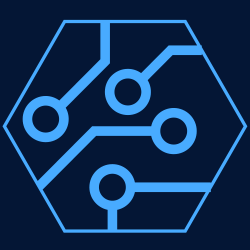[[{“value”:”Welcome to your IBM i update for November & December 2024. This month Andy, takes a trip to Wolverhampton for the final i-UG event of the year, where learn more about the IBM i Code Assistant from Douglas Gibbs. Then, Andy explores the rumours of the upcoming Power 11, before finally wishing COBOL a happy
The post IBM i Update: November & December 2024 appeared first on Proximity.”}]] Read More
Advent of Code 2024 day 10, RPG edition
[[{“value”:”This is the tenth day of Advent of Code, let’s solve today’s puzzles with RPG.
The puzzle as well as the input data are available here.
The code is available here.
Part 1
We are provided with a (stream) file containing a topographic map.
We need to indentify hiking trails going from altitude 0 to 9.
We need to determine, for each position at altitude 0, how many position at altitude 9 we can reach following a hiking trail.
As usual, we read the input file with QSYS2.IFS_READ_UTF8 table function, we concatenate all lines with LISTAGG.
We locate each position with altitude 0. From each one, we look in all 4 directions for a position at altitude 1 and repeat the process until we reach altitude 9. Each time we reach altitude 9, we register the position of the end of the hiking trail. We then count the number of altitude 9 positions reached and reset the list for the next trailhead.
Here is the RPG code for part 1:
**free
ctl-opt dftactgrp(*no); // We’re using procedure so we can’t be in the default activation group
dcl-pi *n;
input char(50);
end-pi;
dcl-pr explore;
pos int(10) value;
search char(1) value;
end-pr;
dcl-pr process;
pos int(10) value;
search char(1) value;
end-pr;
dcl-c WIDTH 54;
dcl-c HEIGHT 54;
dcl-c LENGTH 2916;
dcl-s fileName varchar(50);
dcl-s data char(LENGTH);
dcl-s index int(10) inz(1);
dcl-s trailheads int(5) dim(*auto:292); // Store reachable ends of trails from current traihead
dcl-s result int(20) inz(0);
fileName = %trim(input);
// Read the input data from the IFS, concatenating all lines
exec sql select listagg(line) into :data from table(qsys2.ifs_read_utf8(path_name => :fileName));
// Search first trailhead
index = %scan(‘0’:data);
dou index = 0;
explore(index:’1′); // find 1 around current position
result += %elem(trailheads); // append number of trail ends from current trailhead
%elem(trailheads) = 0; // reset trail ends
if index = LENGTH; // If we’re not on the last position, find next 0
index = 0;
else;
index = %scan(‘0’:data:index+1);
endif;
enddo;
snd-msg *info ‘Result: ‘ + %char(result) %target(*pgmbdy:1); // Send message with answer
*inlr = *on;
return;
dcl-proc explore;
dcl-pi *n;
pos int(10) value;
search char(1) value;
end-pi;
dcl-s line int(5);
dcl-s col int(5);
line = %div(pos-1:WIDTH)+1;
col = %rem(pos-1:WIDTH)+1;
// explore up
if line > 1;
process(pos-WIDTH:search);
endif;
// explore right
if col < WIDTH;
process(pos+1:search);
endif;
// explore down
if line < HEIGHT;
process(pos+WIDTH:search);
endif;
// explore left
if col > 1;
process(pos-1:search);
endif;
end-proc;
dcl-proc process;
dcl-pi *n;
pos int(10) value;
search char(1) value;
end-pi;
dcl-s target char(1);
target = %subst(data:pos:1);
if target = search; // If the position is the requested elevation
if search = ‘9’; // If we are at the end of the trail
if not(pos in trailheads); // IF the trail end hasn’t already been registered
trailheads(*next) = pos; // add the trail end to the list
endif;
else; // If we are not at the end of the trail
explore(pos:%char(%int(search)+1)); // Explore from here for the next elevation level
endif;
endif;
end-proc;
Part 2
In part 2, we count the total number of hiking trails going from altitude 0 to altitude 9.
Instead of registering the positions of the end of the trail, we just count how many times we reach altitude 9.
**free
ctl-opt dftactgrp(*no); // We’re using procedure so we can’t be in the default activation group
dcl-pi *n;
input char(50);
end-pi;
dcl-pr explore;
pos int(10) value;
search char(1) value;
end-pr;
dcl-pr process;
pos int(10) value;
search char(1) value;
end-pr;
dcl-c WIDTH 54;
dcl-c HEIGHT 54;
dcl-c LENGTH 2916;
dcl-s fileName varchar(50);
dcl-s data char(LENGTH);
dcl-s index int(10) inz(1);
dcl-s result int(20) inz(0);
fileName = %trim(input);
// Read the input data from the IFS, concatenating all lines
exec sql select listagg(line) into :data from table(qsys2.ifs_read_utf8(path_name => :fileName));
index = %scan(‘0’:data);
dou index = 0;
explore(index:’1′);
if index = LENGTH;
index = 0;
else;
index = %scan(‘0’:data:index+1);
endif;
enddo;
snd-msg *info ‘Result: ‘ + %char(result) %target(*pgmbdy:1); // Send message with answer
*inlr = *on;
return;
dcl-proc explore;
dcl-pi *n;
pos int(10) value;
search char(1) value;
end-pi;
dcl-s line int(5);
dcl-s col int(5);
line = %div(pos-1:WIDTH)+1;
col = %rem(pos-1:WIDTH)+1;
// explore up
if line > 1;
process(pos-WIDTH:search);
endif;
// explore right
if col < WIDTH;
process(pos+1:search);
endif;
// explore down
if line < HEIGHT;
process(pos+WIDTH:search);
endif;
// explore left
if col > 1;
process(pos-1:search);
endif;
end-proc;
dcl-proc process;
dcl-pi *n;
pos int(10) value;
search char(1) value;
end-pi;
dcl-s target char(1);
target = %subst(data:pos:1);
if target = search;
if search = ‘9’;
result += 1;
else;
explore(pos:%char(%int(search)+1));
endif;
endif;
end-proc;”}]] Read More
Merge pull request #217 from IBM/git-sync robgjertsen1
[[{“value”:”Merge pull request #217 from IBM/git-sync
Travis build: 455″}]] Read More
Profound AppDev: The Complete Solution for IBM i Application Futurization Profound Logic
[[{“value”:”Discover how Profound AppDev’s comprehensive suite enables IBM i organizations to transform their legacy applications through a flexible, coexistence-based approach while preserving valuable investments. With tools like Atrium, Genie, Profound UI, Profound.js, and AI capabilities, organizations can modernize at their own pace while maintaining business continuity.
The post Profound AppDev: The Complete Solution for IBM i Application Futurization appeared first on Profound Logic.”}]] Read More
PGP Encryption and SFTP Push Overview for IBM I Fortra
This brief video quickly highlights how easy it is for IBM i users to securely transfer files with GoAnywhere MFT. It covers how the user-friendly dashboards makes it easy to encrypt, decrypt, and automate file transfers and focuses on PGP encryption and SFTP pushing of files.With GoAnywhere you can quickly create workflows and projects to automate file transfers and other business processes, with built-in templates, a scheduler as well as built-in monitoring to streamline and goof-proof repetitive tasks.Start a free trial: https://www.goanywhere.com/trial Read More


